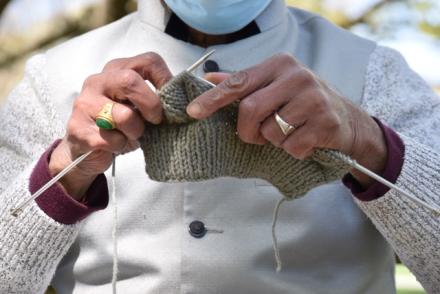
Our interviews in the artisans’ homes concentrated on the craft makers’ lives as art-producers. We did not ask them to relate their “refugee journeys” as that might re-traumatize them to recall the extreme violence that had forced them to become refugees in the first place. The students and i would work together to formulate our open-ended, ethnographic-style questions before each interview with an artisan. We never tape recorded a talk, as that might frighten forced migrants who had often been questioned in refugee camp and upon arrival at a country of resettlement. Rather, we took careful, detailed handwritten notes and each of us typed these up within 24 hours. Then we shared those among ourselves and discussed the texts in detail, searching for themes that stood out. Rodgers was present in every interview with the students and usually knew the artisans well beforehand. Joan or Ellen of RAW would accompany us to the interview, to help make it comfortable for all. The interviewee's grown child, if fluent in English, would serve as our translator. For making the short videos of artisans making their crafts, Troy Thompson, always accompanied by Joan or Ellen of both, would chat first with the artisans in their homes, relying again on their grown children as translators. He would then take photographs and make the videos, which Ellen Ferrante would then help him to edit regarding content. The photo here shows Bhim Subba, originally from Bhutan, at a favorite task, knitting in his home. We visited him often during our studies.
According to the 1953 United Nations definition, a refugee is someone who has been literally forced to flee their country of origin under threat of immediate violence. Refugees are persons “who have been forced to flee their home country due to a well-founded fear of persecution due to their race, religion, nationality, membership in a particular social group, or political opinion.” They grab their children and what belongings they can and flee to internationally-administered refugee camps, where they often languish for years, or even decades. Eventually after long waits and many vetting processes, some are granted official refugee status and clearance to move to a country of resettlement, such as the U.S., Sweden, or Australia. They arrive in those nations fully documented and sometimes with a path to citizenship. That is the case in the US, where many of the artisans and their families in Worcester are now American citizens.
To learn more about the city’s forced migrant craftmakers, see Susan Rodgers’ and Martina Umunna’s 2017 booklet, Path to Empowerment: Refugee Artisans of Worcester (Center for Liberal Arts in the World, Holy Cross). Please enjoy our digital archive.